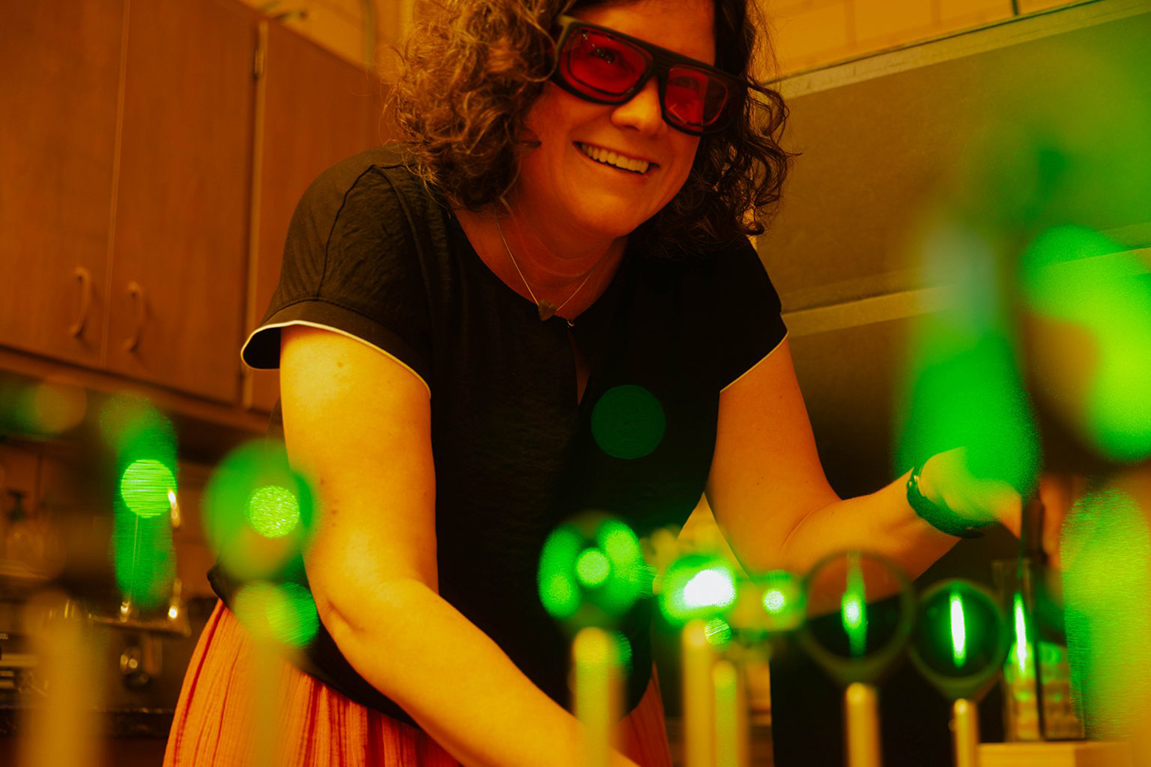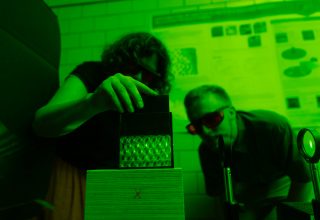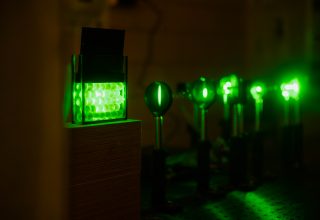
Jacqueline Reber, a structural geologist in the Department of Geological and Atmospheric Sciences, has been awarded this year’s grant from the Frontier Science Fund in the College of Liberal Arts and Sciences (LAS) for her promising work in 3D force visualization and quantification. Reber will use the funds to develop a method for measuring force distribution in 3D granular systems.
The Frontier Science Fund was established in 2021 by Tom (’68 geology, MS ’71) and Evonne (’68 textiles and clothing) Smith. The fund was created to advance highly fundamental research in LAS. The goal is to support and advance high-quality research projects with fundamental and positive societal consequences.

The grant will allow Reber to develop a photoelastic system that can measure stress in three dimensions. Being able to effectively measure stress impacts a variety of industries, from pharmaceuticals to agriculture. It will also be beneficial in earthquake preparedness; with three-quarters of the earth’s population living close to a tectonically active fault or plate boundary, improving seismic hazard assessments is of great societal importance.
As a structural geologist, Reber is interested in rock deformation. When rocks deform, it’s evidence that they were under stress, but there is no way to look inside the rocks to see where these stresses and forces are.
“Measuring stress is incredibly hard in the field because you can’t see it,” Reber said. The first step in understanding force distribution and failure in 3D is to visualize and quantify the force. Currently, stress can only be measured in 2D models.
“There is currently no three-dimensional way of quantifying this, which is kind of crazy when we think about it. It is a really well known problem. It’s very applicable to many scenarios, but it’s really tricky to solve,” Reber said.
The Frontier Science Fund grant will allow Reber to develop a 3D photoelastic measurement system that would help solve that problem.
“As photoelasticity is the only way we can actually visualize the force distribution in every part, we started doing experiments where we used the photoelastic discs embedded in a fluid to figure out how stresses transfer,” Reber said. “Until now, we were forced to do these types of experiments in 2D. It was a logical step to now try to expand it to 3D.”

When squeezed, areas that are stressed transmit light at varying intensities in photoelastic discs, and these are seen as bright areas under polarized light. Discs that are not stressed remain dark. Reber’s innovation is to take the same material, form it into spheres, and visualize the areas of stress using a green light laser.
This new method will allow Reber and her team to perform one-of-a-kind force measurements on a variety of systems, which could lead to a new area of research not currently available. A successful project outcome would open multiple research avenues and make an impact across numerous disciplines.
“I’m very pleased to have this,” Reber said. “This grant helps us to do the research that’s necessary to prove that we know how to do it.” “So, this is a super good bridge between having a good idea and getting to the point where it’s fundable.”